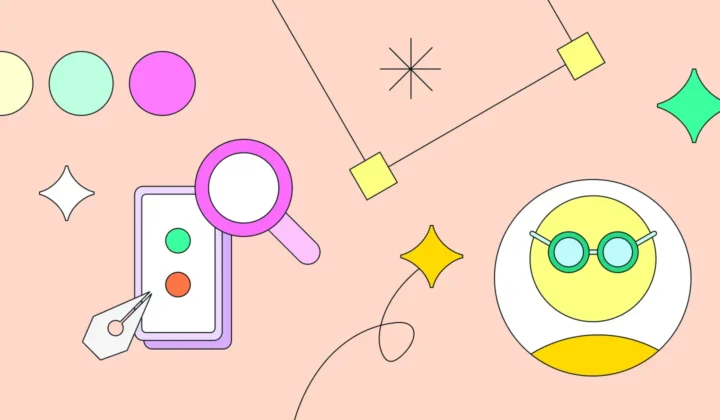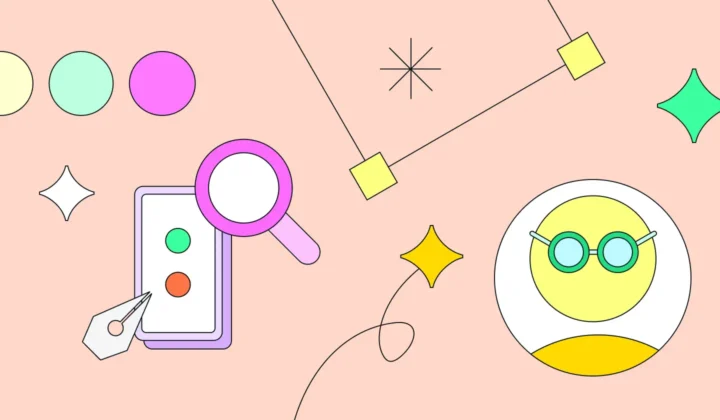Lab Projects
Nurturing Innovation Through Lab Projects
At UX studio, our lab projects help our team flex their creative muscles and freely explore new ideas, methods and technologies.
During lab projects, we work within the studio in a smaller team to achieve a specific goal we’ve set, or develop a product we’ve envisioned. The dedicated time for these projects is usually 1-2 months, depending on the topic.
We approach these in-house projects similarly to client projects. At the beginning, the studio leads assemble the team, define the goals and expectations, and then allow the team to work independently with regular weekly check-ins.
In our latest lab project, we embarked on an experiment to familiarize ourselves with AR and explore how to adapt this technology for children’s needs.
Our Latest Lab Project
In early May, the studio leads shared the news that we were selected to work on UX studio’s next lab project. Anna and Vardan joined the project as designers, and Réka as our dedicated researcher.
After receiving the brief, we held a kick-off meeting where the studio leads presented the following challenge:
- The task was to design an AR/VR experience from scratch.
- Deliverables included detailed documentation of our ideas and research.
- We needed to make a prototype or demo.
- The final project should have a visual identity.
- They gave us a six week deadline.
Let’s follow step-by-step how a project like this comes together.
Venturing into AR Design for Kids
The final result of our lab project was an educational AR app, Letter Looters. Try the prototype here.

Letter Looters is a modular educational tool aimed at pre-elementary school students. It transforms the learning experience by integrating AR technology, making the process of learning to read interactive and engaging.
In the game, children find themselves in Alphaville, where letter-eating creatures live. Their task is to find and collect letters in an AR experience and feed their chosen creatures with the letters.
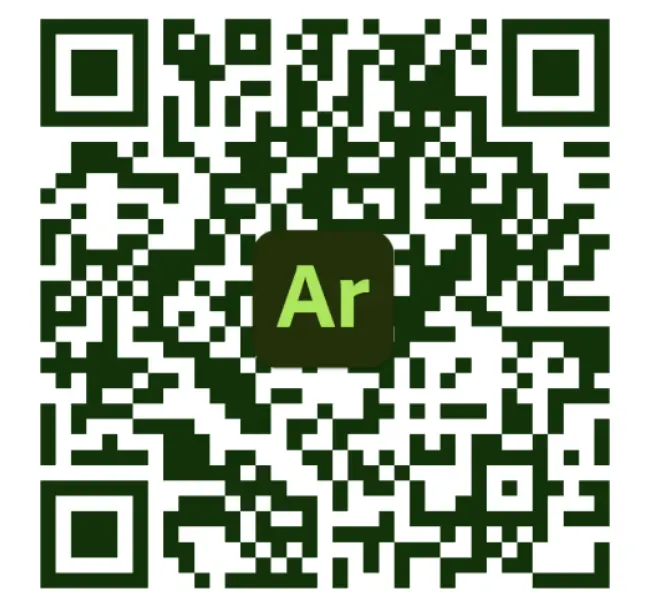
Download the Adobe Aero application and then check out our spatial models via the link or scan the QR code above.
Considerations When Designing for Children
Designing for children always has its own set of sensitive factors. We wanted to implement strict guidelines for this project to make sure our little audience had a safe experience.
Privacy and Data Protection
Data privacy is always appreciated, but it’s a must-have when your user base is made up of children and minors. We were firm about not using or storing personal information in any way that could endanger users. This is especially important in AR, because children would be filming their environment.
Consent
Whenever we interviewed parents or involved children in later usability tests, we provided detailed information so guardians could give their informed consent. We didn’t ask them for sensitive information or data that could identify the children. No recordings were made, and no personal data was recorded. If you want to learn about usability testing for children, you can read more about it in our blog.
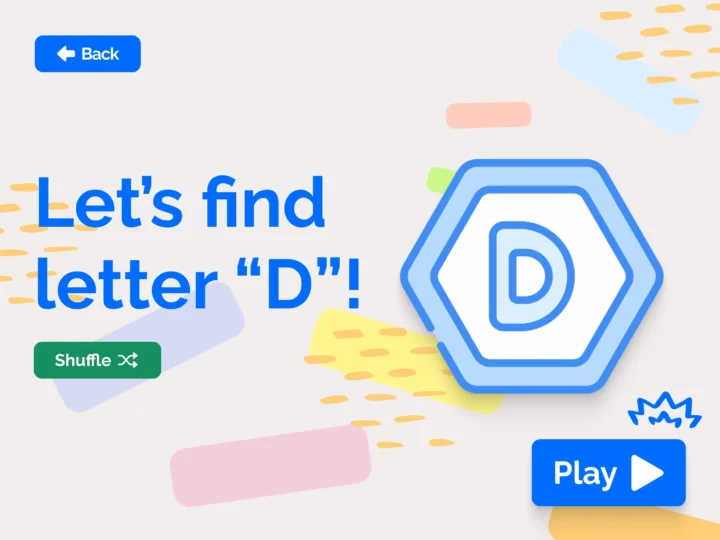
Stressors
Children are sensitive. We wanted to make sure that nothing in the app could reasonably overstimulate, upset or scare them. We also avoided addictive elements or psychological tricks that’d glue them to the screen. Similarly, we only included age-appropriate elements: no violence or edgy humor.
Parental Controls
Parents should be in control of children’s screen-time, so when we settled on this audience we knew we’d want to implement parental guides and controls.
Advertisements
When designing this project, we deliberately set up the flow in a way that it had no advertising or in-app purchase possibilities.
Intuitive Interface
Kids may be tech-savvy, but their digital needs and habits are different from adults. Since their hands are smaller and their dexterity is not completely developed, they need large, easy-to-tap buttons. They cannot read, so visual and audio guidance in clear, simple language is needed.
The Process: The Double Diamond Approach
We relied on a classic UX design method to tackle the challenge of designing an AR experience for children. The double diamond approach has continuous iteration on testing flows after every task, which allowed us to refine the gameplay and user experience throughout the development process.
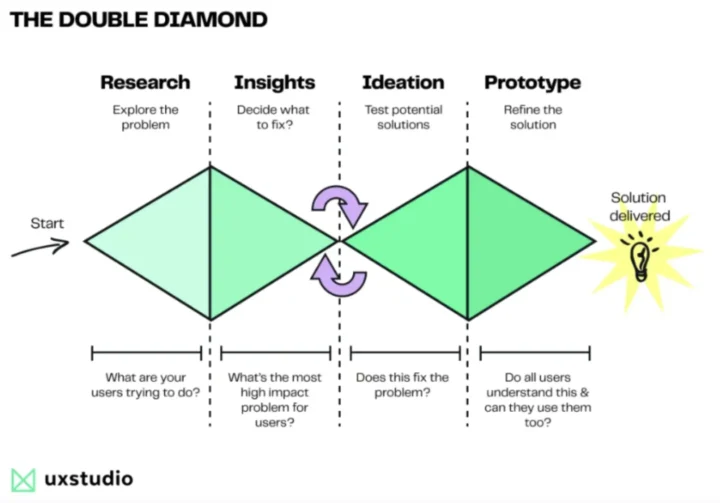
The double diamond method has four main phases: discover, define, develop and deliver.
1. Discover
Brainstorming
The first and most important step was the choice of topic. Since it was to be a quick internal project, we looked for target groups and areas that we were reasonably familiar with.
In the first phase of brainstorming, we defined broader areas such as health, education or art. Then we brainstormed specific products in these areas and considered how and why the target audience might use the AR/VR experience. As we only had six weeks, we also discussed potential challenges for each idea in detail.
Finally, we chose the topic of education and specifically the age group of primary school children. We knew that a common problem that most families experience is the transition from kindergarten to school. We defined this broad problem as a starting point.
Desk Research
The relationship between children and the digital world is highly debated. After deciding to design an app for children, we conducted desk research on the impact of digital products on children.
Scientific research has pros and cons regarding digital device use. Our goal wasn’t to find the truth in this debate but to ensure that our app wouldn’t negatively affect children. We wanted to create something truly useful and fun. After reviewing the research results, we compiled criteria for a safe app for children.
Whenever creating a game or any other product for children, entertainment and profit are important, but the product’s impact on children’s development shouldn’t be neglected at any cost.
2. Define
We sought to define the problem our product would solve. Note that this is a bit unusual: most products start with a pain point. This challenge is unique to lab projects, but we solved it with standard user research.
Interviews with Parents
Réka interviewed parents of first graders to uncover the challenges faced by the kids and their parents in a safe way.
Generally speaking, parents love talking about their children and are happy when someone is interested in solving their child’s or family’s challenges. However, parents naturally protect their children and may have biases, so we needed to consider these factors.
It was important for parents to feel that we genuinely cared about their issues and wanted to help. Sharing personal experiences, such as ‘I remember when my daughter was this age, we were in a similar situation,’ helped to build rapport, in response to topics the parents had already raised. We avoided sharing personal experiences upfront to prevent influencing the direction of the research.

During the interviews, several problems were identified. We highlighted four significant and widespread issues in children’s lives. We then brainstormed solutions for these four problems and selected the top three ideas.
Storyboarding
We put our ideas on sticky notes, and started to discuss them, then built a storyboard, which was more useful. It helped to visualize how our ideas would work in reality and solve the main paint point. Additionally, putting up storyboards while discovering the exact steps we were able to better see the entire journey from our target audience’s perspective. This approach helped identify major pain points early on, providing opportunities to address them before diving into the design process.

We created storyboards with the help of ChatGPT 4. We wrote the text and asked the AI system to visualize it. In this way, we could create storyboards within a very short time for rapid ideation.
After creating the storyboards, we saw that only one of the three ideas truly benefited from AR technology, adding value beyond just enjoyment. So we kept this idea and dropped the other two. This led us to our letter hunting game concept, which you can check out here.
Feature Ideation
Once we decided on the concept of our product, we began brainstorming potential features we would need to work on in the development phase. Many essential features already emerged during storyboard creation sessions.
Since we were designing a product for kids, we went beyond the usual steps of feature ideation. We carefully examined how children are influenced by the digital world, identifying crucial features to ensure a safe digital environment.
Understanding children’s developmental stages was crucial, as it influences their cognitive abilities, attention span, and emotional development. Getting a comprehensive understanding enabled us to tailor digital experiences specifically to our target audience’s age group.
3. Develop
Concept Test with Adults
Based on the above, we defined the problem: learning to read is boring for elementary school children who are accustomed to a much more playful kindergarten environment.
We aimed to develop a solution enriched with an AR experience for them, coming up with the idea of Letter-eating Monsters.
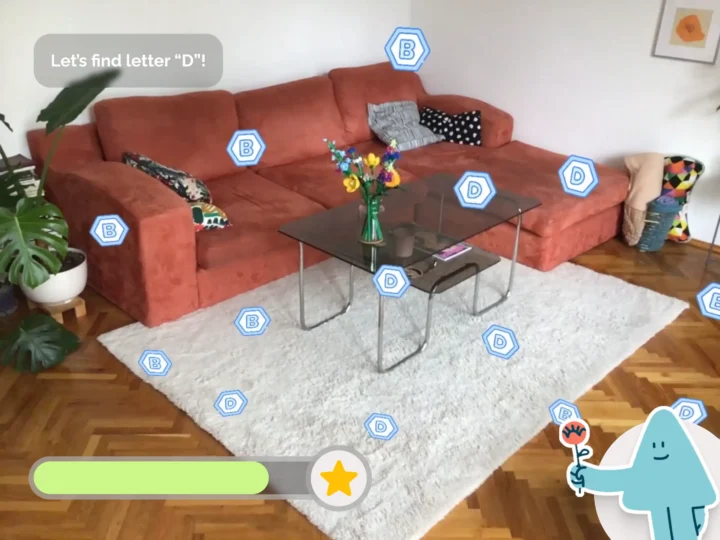
But before diving deep into this idea, we were curious about what parents thought about it. Although our imagined product was designed for children, parents play an important role in what digital games their kids can use. If they deem a digital product inappropriate, they will not support their children using it.
Therefore, we conducted a concept test with them. In the first part of the test, through a brief interview, we wanted to know what digital products their children use for learning and play purposes. How satisfied they are with these products, and what positives and negatives features they highlight.
Then we showed them the concept-level prototype and asked for their opinions. Based on their feedback, the idea itself was not a bad direction, and they provided a lot of useful feedback on how to continue the design process.
AR and Safety
Our concept test highlighted that safety is crucial when building an AR experience for children. AR content seamlessly integrates with the real world, and that’s where things get interesting.
Lighting conditions, object recognition, and surface detection can all affect how AR elements appear. This presented a unique challenge for our letter hunt feature. We wanted to make sure that kids will not hurt themselves, the usage of our game will be completely safe. For example, they don’t fall in a chair while looking for letters. However, since we are talking about an AR experience, we cannot influence the obstacles and objects in the environment.
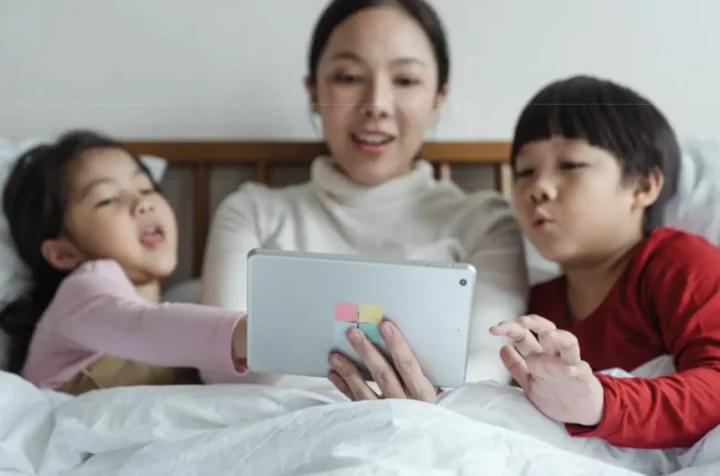
We made sure to clearly communicate the need for a safe play area. We encouraged the use of AR in spacious, well-lit environments free of potential hazards. Additionally, we incorporated prompts within the game that remind children to stay aware of their surroundings.
Positioning Elements
Initially, we envisioned kids hunting for letters hidden behind objects like couches or pillows, similarly to a treasure hunt game with letters. However, AR design is limited to the horizontal or vertical plane your mobile device detects. This meant we couldn’t position elements as freely as we had hoped.
We created a “hugging” spatial model that surrounds the user within 180 degrees. This allows kids to move freely, tilt their heads, and explore their surroundings to find letters, keeping the gameplay dynamic and safe.
Hardware Constraints
AR experiences rely on a user’s device capabilities. Processor speed, camera quality, and ARKit/ARCore features can vary significantly, making a smooth experience across all devices tricky. We used Adobe Aero for mobile devices and Gravity Sketch for VR glasses to preview our work.
Animations and 3D Elements
Since we were designing a product for kids, we wanted to make it fun and engaging by incorporating vibrant animations.
However, creating realistic and engaging 3D models required a steep learning curve, and integrating these models into the AR environment added another layer of complexity. Additionally, ensuring the animations were smooth and visually appealing while maintaining performance on various devices was a difficult task. We used Blender for 3D modelling and animations.
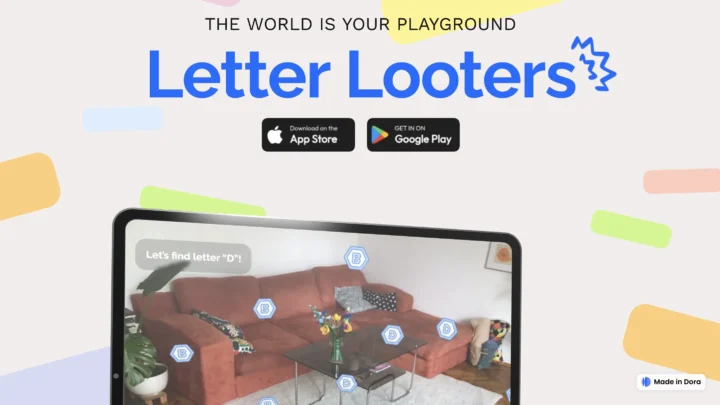
In the 6 weeks of the project, we couldn’t polish these features, so we had to compromise here.
Designing AR UI
Showcasing a product without a fixed UI is probably the biggest challenge of AR design, at least for a traditional UX/UI designer. Due to the limitations of the project, we had to make some creative shortcuts.
In our exploration of AR Core Gameplay, we used Adobe Aero to construct a model that showcases the interactive AR experience itself. Moving to UI Integration, we employed Figma to incorporate a pre-recorded video from the Aero experience, overlaying essential game elements such as the progress bar and mascot. To ensure cohesion, we synchronized these components using Figma’s prototyping features, animating the interface to deliver a seamless user experience. Lastly, After Effects improved our prototype with dynamic feedback elements like sound effects and animations.
By harnessing the capabilities of Adobe Aero, Figma, and After Effects, we developed a realistic-looking prototype without fully committing to AR development. This approach enabled thorough testing and iteration of the Letter Looters concept before advancing to the next stages.
Usability Tests
After having the first version of the design we did usability tests with children.
Children differ from adults in many ways. During usability tests, one of the most notable differences is that they are not always honest. They try to fulfill the expectations they think a stranger has. This means they often say they understand or like something even if they don’t. It was extremely important to pay attention to their nonverbal cues.
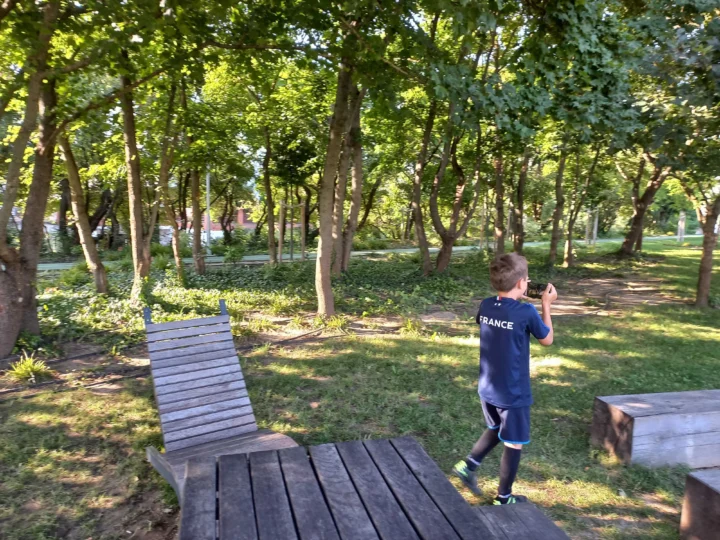
Additionally, creating a comfortable environment for them was our top priority. The tests were conducted either in their homes or in a familiar place, and always with the parents’ full knowledge and informed consent. This way, at least not everything was new to them. Knowing the location created a friendly atmosphere, which eased the children’s tension.
Gamification
From the moment we decided to design a product for kids, we knew we would need to think about gamification elements too. One of the primary hurdles was creating engaging and age-appropriate content. First we thought of creating Letter Monsters. However, after speaking with kids and their parents during the tests and interviews, it came out that some characters and monsters might be too scary for this age group. Also, some ‘simple’ icons were not clear for them.
We always emphasize that talking to users is crucial in product development, and this is even more essential when the users are children. They see things from a very different perspective. They might not understand something that seems crystal clear to us, or they might dislike something we are sure they would love. For example, we had to completely remove one of our characters, because kids did not like her at all.
4. Deliver
No project is ever finished, they just hit a deadline. Designing an AR game is not a six-week job, especially since we only had four weeks left by the time we reached this stage. So we focused on developing the game mechanics and creating a working prototype by the deadline.
In the end, the game mechanics came together, the children enjoyed and loved it, and the parents were optimistic too. Overall, we feel that in six weeks, we have put together a product concept that could be a good starting point for developing a real product.
We have many ideas how to further improve Letter Looters in the future:
- Polish the graphics
- Involve the gamification aspect more (eg. rewarding system connected to the motivational system)
- Adding more levels (eg. hunting words, creating words from the collected letters)
- Developing a detailed motivational system (kids could feed their characters who would grow, and different abilities would develop)
- Creating the features we envisioned for parental control (eg. screen limit)
The project was made possible by the close collaboration of our tiny team. We had frequent check-ins, with more in-depth discussions every two or three days.
When we reached decision points and began brainstorming together, no one was afraid to ask questions or share their opinions. There were occasional disagreements and tense moments, but we always remained open to each other’s perspectives. In crucial moments, these conversations always propelled us forward.
It also helped that we picked a topic we were genuinely passionate about. This personal investment made us more committed to the project’s success and motivated us to deliver our best work.
Summary
Our journey through this lab project has been both challenging and rewarding. It has enabled us to experiment with AR, from conceptualization to implementation. This hands-on experience has broadened our understanding of technical requirements, user interface design, and user experience considerations unique to AR applications.
Designing for specific user groups, such as 5-7 year olds, is certainly tricky. This is why we always rely on research to validate our ideas and save time. Browse our research services to learn more.
